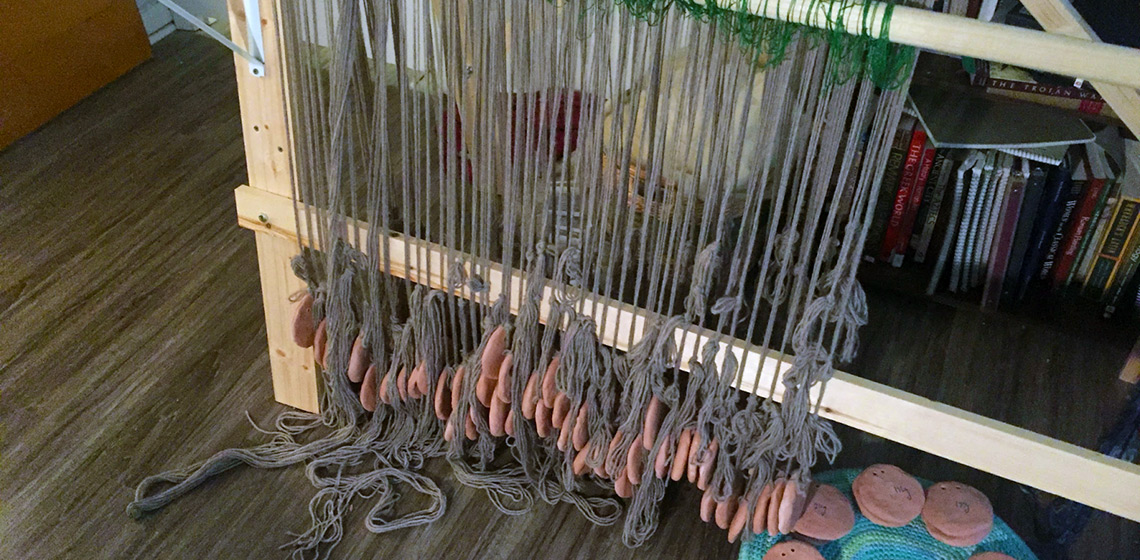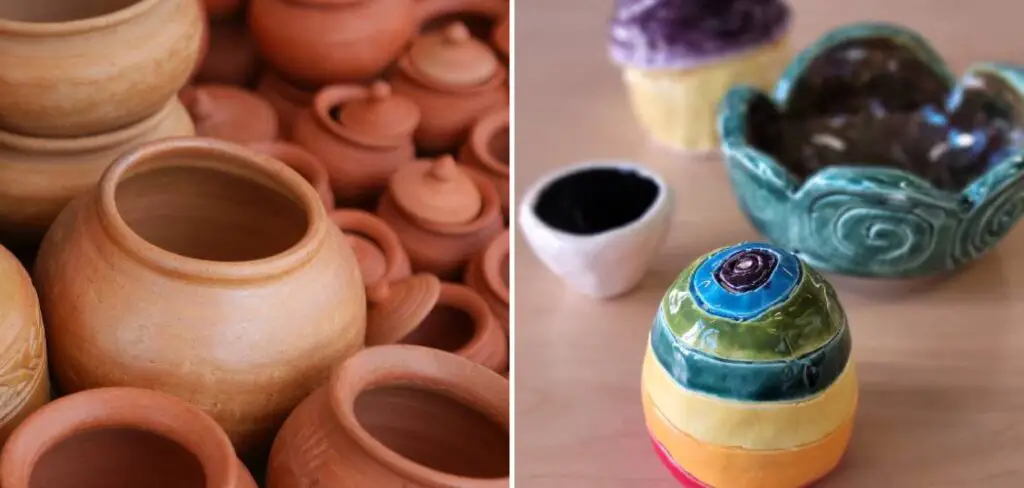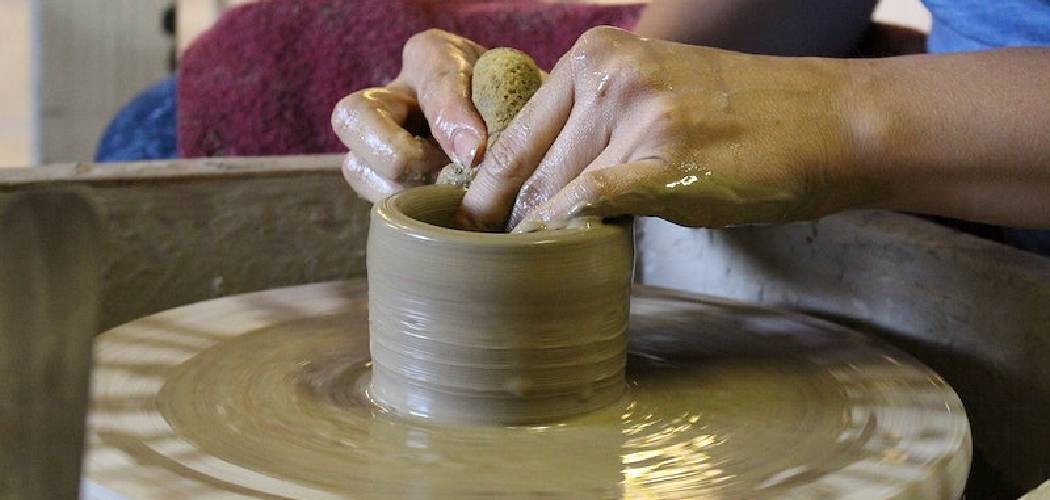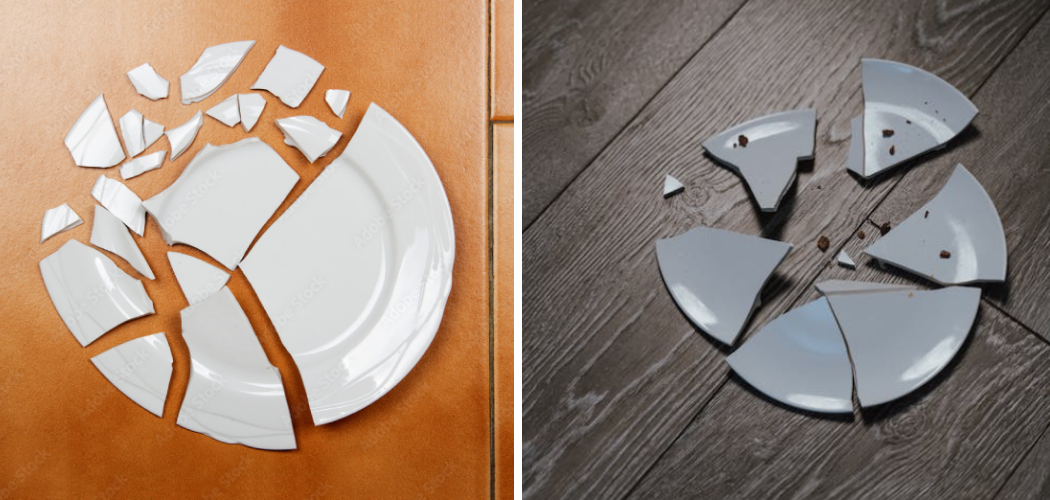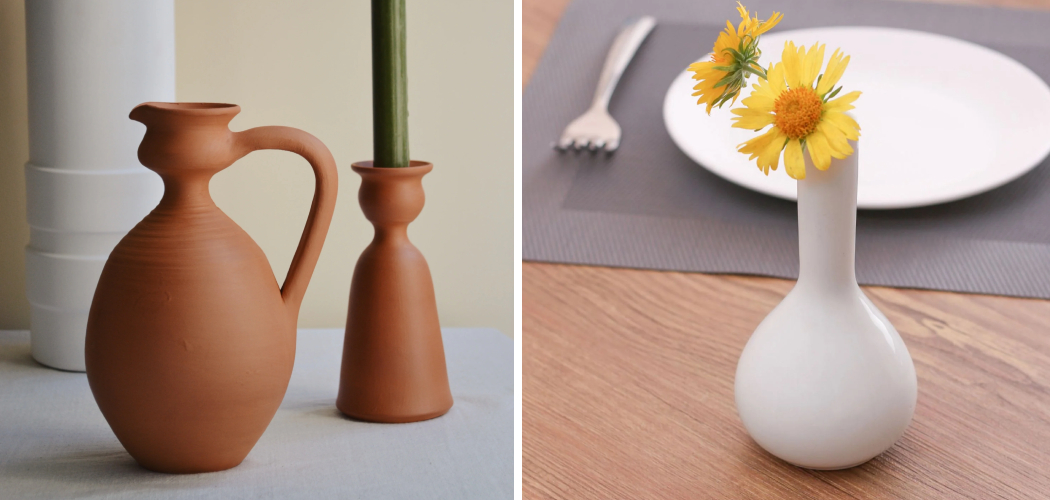Introduction to Clay Pottery Repair
Clay pottery has been a staple of human civilization for thousands of years. From ancient Greek amphoras to modern-day vases, clay pottery has been used for both functional and decorative purposes.
However, with use and time, clay pottery can become damaged and broken. This is where the importance of repairing clay pottery comes in. Repairing broken pottery not only restores its functionality but also preserves its historical and cultural significance. When it comes to repairing clay pottery, glue plays a crucial role. The right glue can make all the difference in the success of a repair.
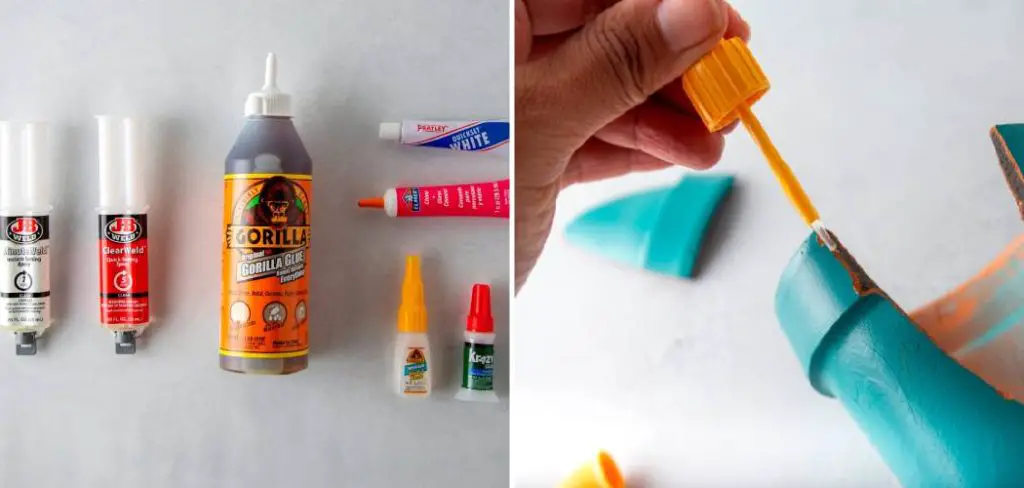
It is important to choose a glue that is strong enough to hold the broken pieces together but also dries clear and does not leave any residue. In this article, we will discuss the best glue for clay pottery, the different types of clay pottery glues available, the factors to consider when choosing a glue, and tips for successful repairs.
Table of Contents
Understanding the Different Types of Clay Pottery Glues
There are several types of glues available for clay pottery repair, each with its own pros and cons. The most common types of glue used for clay pottery repair are cyanoacrylate glue (super glue), epoxy glue, and polyvinyl acetate (PVA) glue. Cyanoacrylate glue is a fast-drying, clear glue that is ideal for small, delicate repairs.
It is easy to use and dries quickly, but it is not as strong as other types of glue and can become brittle over time. Epoxy glue is a two-part adhesive that is known for its strength and durability. It is ideal for larger repairs and can be used on a variety of surfaces, including clay pottery. However, it can be messy to work with and has a longer drying time.
PVA glue, also known as white glue or school glue, is a water-based adhesive that dries clear and is easy to clean up. It is not as strong as other types of glue and is best used for small, non-structural repairs.
Factors to Consider When Choosing a Clay Pottery Glue
When choosing glue for clay pottery repair, there are several factors to consider. The first factor is strength. You want a glue that is strong enough to hold the broken pieces together but not so strong that it damages the pottery. The second factor is drying time. Some glues dry quickly, while others take longer to dry.
The third factor is color. You want glue that dries clear or matches the color of the pottery. The fourth factor is toxicity. Some glues contain harmful chemicals that can be dangerous to handle, so it is important to choose a glue that is safe to use.
5 Best Glue for Clay Pottery
1. Gorilla Super Glue Gel
Welcome to Gorilla Super Glue Gel! Whether you’re a professional handyman or just a beginner, this glue is perfect for any type of repair. Our Gorilla Super Glue Gel formula was designed with no run control gel – meaning you won’t have to worry about the glue dripping everywhere. Plus, it’s great for use on vertical surfaces that need maximum strength and impact resistance.
And with our anti-clog cap, you don’t have to worry about the glue drying out. This product has been specially formulated for increased impact resistance and strength, so whatever your project is, rest assured it will do the trick!
This fast-setting glue gel is an indispensable tool for anyone who values their time and wants to get projects done quickly – without skimping on quality. And there’s no need to worry about clamping – Gorilla Super Glue Gel sets in seconds, so you can move on to the next task at hand.
Gorilla Super Glue Gel really packs a punch. It’s strong enough to bond materials such as plastic, wood, metal, ceramic, rubber, leather and paper with ease. Any job that requires heavy-duty support? Gorilla Super Glue Gel has got your back! And with its convenient size and resealable cap it’s always ready for whatever challenge comes your way. But don’t use it on polyethylene or polypropylene plastic or similar materials – they require a special type of glue altogether.

Pros:
- No run control gel ensures no dripping
- Anti-clog cap keeps glue from drying out
- Sets in seconds for quick and easy repairs
- Bonds materials such as plastic, wood, metal, ceramic, rubber, leather and paper with ease
- Portable size for easy carrying
Cons:
- Not suitable for polyethylene or polypropylene plastic or similar materials
2. Mod Podge Dishwasher Safe Waterbase Sealer
Make your creations last with Mod Podge Dishwasher Safe Waterbase Sealer, the perfect all-in-one glue, sealer, and finish for your decoupage projects. This 16 oz bottle of top-rack, dishwasher-safe multi-purpose adhesive is great for everyday use and produces a hard, glossy finish that will protect your finished art pieces no matter how many times they go in the dishwasher.
Use it to secure fabric, paper, and other materials to wood, glass, plastic, metal and more. It’s perfect for DIY decoration projects at home or in the classroom. Plus it’s easy to use – just brush on a thin layer and let dry before using any additional layers. With Mod Podge Dishwasher Safe Waterbase Sealer you can make sure that your projects look great today and tomorrow!
The Mod Podge Dishwasher Safe Waterbase Sealer is the perfect companion for all your craft projects. This quick-drying formula works on a variety of surfaces, including coffee mugs, wine glasses, tumblers and more. All you need to do is apply a thin coat over the unfinished surface and let it dry for just 15 minutes! It then yields that smooth, classic finish that everyone desires.
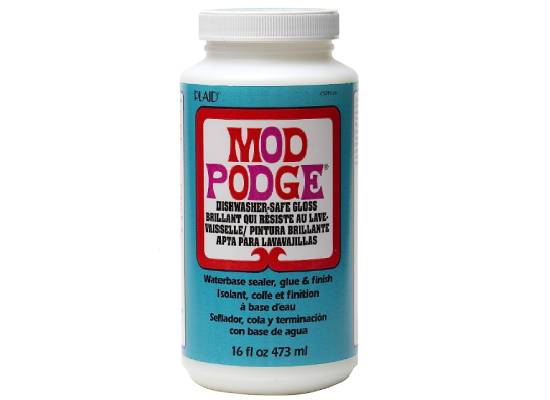
Pros:
- Quick-drying formula
- Dishwasher safe when dry
- Hard, glossy finish that lasts for years
- Suitable for all surfaces, including clay pottery
- Easy to apply and use
Cons:
- Needs multiple coats for larger projects
3. Aleene’s 21709 Jewelry & Metal Instant Adhesive
Aleene’s 21709 Jewelry & Metal Instant Adhesive is a perfect solution for anyone looking to make their creative jewellery and metal projects come to life. This 70-ounce tube of glue is an instant adhesive that is specifically designed for use on metals, stones, glass and beads. With Aleene’s Jewelry & Metal Instant Adhesive, you can rest assured that all the components of your project will stay firmly in place.
Not only does it give you the confidence that your project will last, but its easy application creates a seamless effect. It’s ideal for any novice or experienced crafter in need of the right adhesive for their project. Plus, it comes with 1 unit per package so you don’t have to worry about running out during your next craft session! Make sure your projects really stick with Aleene’s Jewelry & Metal Instant Adhesive.
This strong, permanent adhesive bonds quickly and features a convenient gel formula that won’t run when applied. Plus, it dries clear for an invisible bond so you won’t ever have to worry about unsightly black streaks or marks on your pieces. Best of all, the adhesive comes in handy.
7 oz metal squeeze tube for easy access whenever you need it. Whether you’re using it to permanently attach metal findings to fabric, beads and gems to metal or even leather pieces together – Aleene’s Jewelry & Metal Instant Adhesive has got you covered. With its superior strength and fast-drying properties, you can be sure that your project will look great every time!
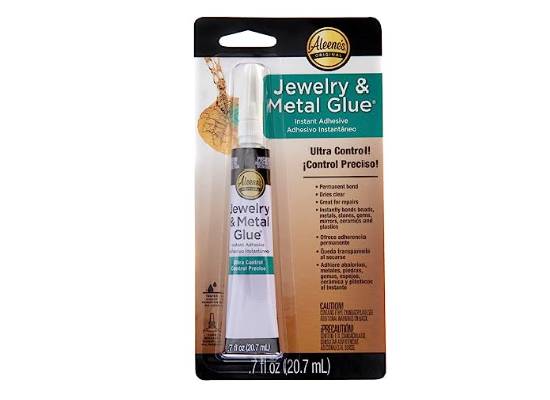
Pros:
- Quick drying
- Clear finish
- Easy application
- Great for jewellery and metal projects
- Convenient .7 oz squeeze tube
Cons:
- Not the best choice for heavier or thicker items like clay pottery pieces as it may not provide enough stronghold.
4. Krazy Glue
Krazy Glue Home & Office formula is perfect for a variety of projects like office work, schoolwork and crafting. The brush-on applicator provides precise and exact surface coverage that’s easy to control on large surfaces and in hard-to-reach areas. This glue is versatile enough to tackle most of your sticking needs with just one tube. It bonds almost any clean, dry surface instantly including wood, metal, plastics, leather, and glass.
Krazy Glue’s professional strength bond dries clear in just minutes and does not require clamping or hold time for maximum adhesion; it also resists moisture and remains flexible after drying. It is safe to use indoors since the glue bonds without strong fumes or odors. Whether you’re needing something for the home or office, you’ll be sure to get the job done right with Krazy Glue!
Krazy Glue Home & Office formula is perfect for a variety of projects like office work, schoolwork and crafting. The brush-on applicator provides precise and exact surface coverage that’s easy to control on large surfaces and in hard-to-reach areas. This glue is versatile enough to tackle most of your sticking needs with just one tube.
It bonds almost any clean, dry surface instantly including wood, metal, plastics, leather, and glass. Krazy Glue’s professional strength bond dries clear in just minutes and does not require clamping or hold time for maximum adhesion; it also resists moisture and remains flexible after drying.
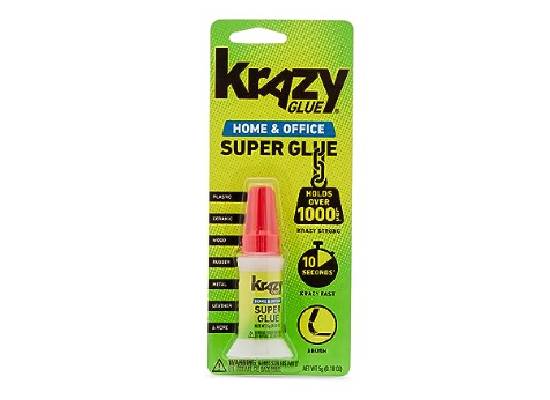
Pros:
- Dries clear and will not yellow over time
- Safe for use indoors with no strong fumes or odors
- Versatile enough to tackle most of your sticking needs
- Professional strength bond does not require clamping or hold time for maximum adhesion
- Resists moisture and remains flexible after drying.
Cons:
- Not suitable for clay pottery due to the porous nature of clay
- Not ideal for projects that require soaking in water or being exposed to frequent changes in temperature and humidity.
5. J-B Weld 33120H SuperWeld Glue
Are you looking for a glue that can hold up to tough conditions? Look no further than J-B Weld 33120H SuperWeld Glue! This specially formulated cyanoacrylate superglue is specifically designed to provide a strong, instant bond in as little as a few seconds! You can even use it on harder surfaces and multiple substrates. It’s ideal for certain projects where you need quick results; from emergency repairs to DIY crafts.
The amazing bonding power of J-B Weld SuperWeld Glue means less time spent waiting for glue to dry. In addition, it doesn’t require clamping or special tools, giving you more freedom of movement when tackling repairs or projects. Plus, this lightweight glue is easy to carry with you and won’t take up too much space in your toolbox.
Take on any tough job with the help of J-B Weld 33120H SuperWeld Glue! This professional-grade glue is perfect for tougher projects that require extra strength. From construction and repair pros to mechanics, builders, and DIYers, this product has been trusted for years by professionals who know its ability to bind to a variety of surfaces under the toughest conditions.
Whether you’re doing a large project or a small one, you can rely on SuperWeld Glue for maximum strength and durability every time! It dries rock-hard in minutes and won’t let go until you want it to. With SuperWeld Glue, there’s no job too big or too small! When your projects call for the best, go with J-B Weld 33120H SuperWeld Glue – it’s the only glue all professionals trust.
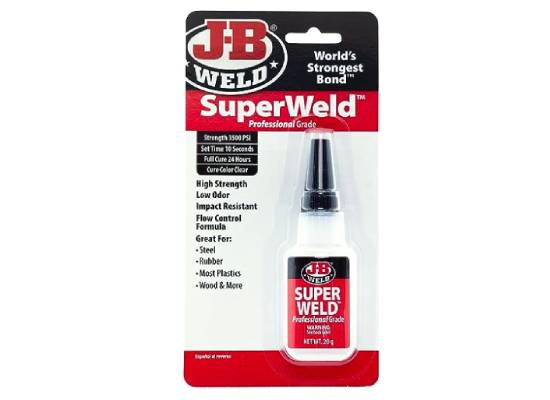
Pros:
- Quick and easy to use, dries in minutes
- Incredible bonding strength, even on tougher surfaces
- No need for clamping or special tools
- Lightweight and portable, perfect for DIYers and pros alike
Cons:
- Can become brittle with age
- Not the most flexible option, less suitable for larger projects
Types of Clay Pottery and Their Characteristics
Clay pottery is a type of ceramic work that has been molded and fired from natural clay. Clay pottery can take the form of functional objects such as jars, vessels, and cookware or decorative items such as sculptures, wall hangings, and jewellery. You may be wondering which glue works best for the various types of clay pottery on the market.
The type of clay pottery you are using will determine the best glue to use. For instance, earthenware is a popular type of pottery which can be glazed or unglazed. Different types of glues may work better with glazed or unglazed earthenware depending on the type of material used for the finish. If you are glueing unglazed earthenware, the best glue to use is a super glue such as Gorilla Glue. For glazed earthenware, you can use either a waterproof epoxy or a craft adhesive like hot glue.
Another type of pottery that is used often in clay pottery is stoneware. Stoneware is a stronger, more durable kind of pottery that can be glazed or unglazed. For stoneware that has been left unglazed, the best glue to use is again super glue or Gorilla Glue. However, if the stoneware has been glazed, you should opt for an epoxy adhesive in order to ensure that the two pieces do not separate.
How to Apply Clay Pottery Glue for Best Results
To apply clay pottery glue for the best results, follow these steps:
1. Clean the broken pieces of pottery with soap and water and let them dry completely.
2. Apply a small amount of glue to one of the broken pieces.
3. Press the broken pieces together and hold them in place for at least 30 seconds.
4. Let the glue dry completely before handling the repaired pottery.
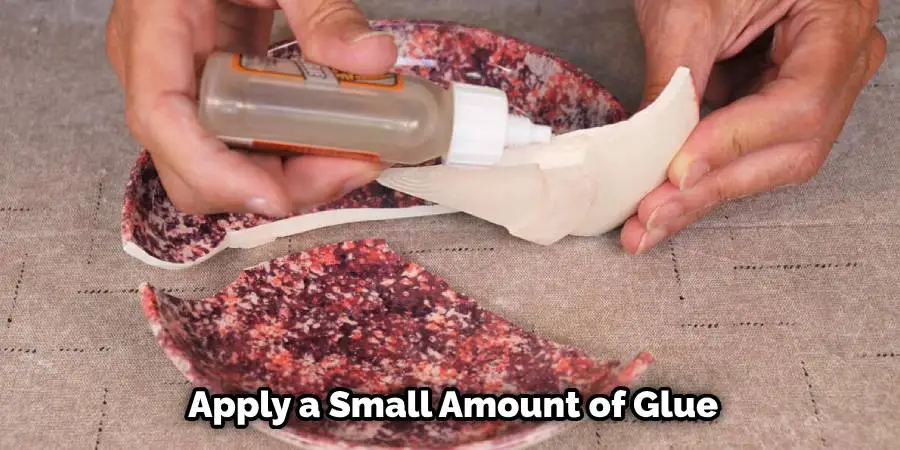
Be sure to read the instructions on your glue carefully and use caution when applying it. Clay pottery is fragile, so taking extra care when gluing it back together will ensure that you don’t damage it further. You may also want to consider wearing safety glasses while using the glue as some products contain solvents which can be an eye irritant.
Using the best glue for clay pottery will help your project last longer and look great. Keep in mind that the type of glue you select should be dependent on the type and size of the pieces you are bonding together. With a little bit of research, you can find glues that will work best for your project!
Safety Precautions
Working in a Well-Ventilated Area
When you’re working with any type of adhesive, it’s important to work in a well-ventilated area. This is especially true for glues used on pottery, as they can give off fumes that can be irritating or even hazardous to your health. Before beginning your project, make sure the area you’ll be working in has adequate ventilation and open windows or a fan to disperse any fumes.
Evaluating Different Adhesives
There are many types of adhesive available on the market that claim to be the best for clay pottery, so it’s important to research each option before making your decision. Consider factors like how quickly the adhesive sets, how easy it is to use, and its overall durability. It’s also important to choose an adhesive that’s designed for use with the specific type of clay you’re using.
Wearing Protective Gear (Gloves, Eye Protection)
When it comes to working with glue for clay pottery, always make sure to wear protective gear. This includes gloves and safety glasses or goggles to protect your eyes from any fumes or particles that may be released. When handling the glue itself, you should also take extra precautions like wearing a face mask. It’s important to use these safety measures not only for your own safety, but to make sure that the structure of your clay pottery is not compromised.

Keeping Glue Away from Skin and Eyes
When using glue for clay pottery, it is important to keep the glue away from your skin and eyes. While many glues are safe when used properly, contact with them can still cause irritation or even burning sensations depending on the ingredient in the particular product you’re working with.
Be sure to wear gloves while handling any kind of material related to gluing clay pottery, especially if you are working with super glue or epoxy. To protect your eyes, wear safety glasses as well when handling these materials.
It’s also essential to read the warning labels on all glues and other adhesives before using them. It is possible for even the best glue for clay pottery to create hazardous fumes if used improperly, and it is important to take the necessary safety precautions. Make sure you are working in a properly ventilated area as well, so that any chemical fumes are not inhaled.
Tips for Successful Clay Pottery Repairs
When it comes to repairing pottery, taking certain precautions is crucial to ensure a successful and long-lasting repair. To begin with, using a toothpick or small brush to apply glue to small or hard-to-reach areas is a wise move. This will ensure that the glue is applied evenly and that all areas are covered.
Once the glue has been applied, it’s essential to hold the broken pieces together while the glue dries. This can be achieved by using a clamp or rubber bands, which will keep the pieces in place and prevent them from moving around. Before applying the glue, it’s also advisable to sand the edges of the broken pieces.
This will create a better bond between the pieces and ensure that they stick together more securely. To speed up the drying process, a hairdryer can be used, but caution must be exercised not to overheat the pottery, as this can cause it to crack or break further. Finally, it’s always a good idea to test the glue on a small, inconspicuous area of the pottery before applying it to the broken pieces.
This will help to ensure that the glue is compatible with the pottery and that it won’t cause any damage or discoloration. When it comes to repairing pottery, taking certain precautions is crucial to ensure a successful and long-lasting repair. To begin with, it’s important to use a toothpick or small brush to apply glue to small or hard-to-reach areas.
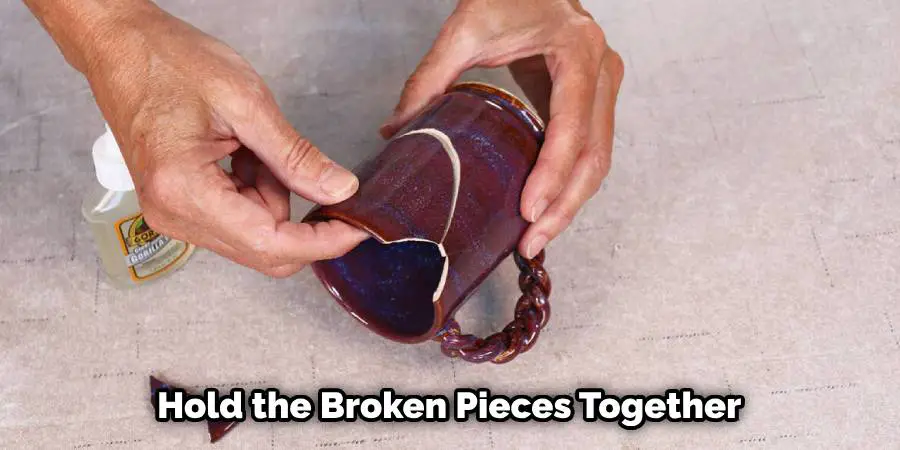
This will ensure that the glue is applied evenly and that all areas are covered. Once the glue has been applied, it’s essential to hold the broken pieces together while the glue dries. This can be achieved by using a clamp or rubber bands, which will keep the pieces in place and prevent them from moving around. Before applying the glue, it’s also advisable to sand the edges of the broken pieces. This will create a better bond between the pieces and ensure that they stick together more securely.
To speed up the drying process, a hairdryer can be used, but it’s crucial to be careful not to overheat the pottery, as this can cause it to crack or break further. Finally, it’s always a good idea to test the glue on a small, inconspicuous area of the pottery before applying it to the broken pieces. This will help to ensure that the glue is compatible with the pottery and that it won’t cause any damage or discoloration.
Common Mistakes to Avoid When Repairing Clay Pottery
Here are some common mistakes to avoid when repairing clay pottery:1. Using too much glue, which can cause the glue to seep out and leave a residue.2. Using the wrong type of glue, which can cause the repair to fail.3. Not cleaning the broken pieces of pottery before applying glue, which can prevent the glue from bonding properly.4. Rushing the drying process, which can cause the repair to fail.5. Not applying enough pressure to the broken pieces while the glue dries, which can cause the repair to be weak.6. Not sanding the broken pieces, which can prevent them from bonding properly.
These are easy mistakes to avoid when repairing clay pottery and following the steps outlined above will help you achieve a successful and long-lasting repair. Be sure to take your time and carefully consider the type of glue you use for your project. With the right product and proper application, you can ensure that your project will be a success. Good luck!
How to Maintain and Care for Repaired Clay Pottery
To properly care for and maintain repaired clay pottery, follow these tips:
When it comes to taking care of pottery, there are a few important things to keep in mind.
Firstly, it’s crucial to avoid exposing the pottery to extreme temperatures or direct sunlight. This can cause the pottery to crack or fade over time.
Secondly, it’s important to handle the pottery with care to avoid further damage. Pottery can be fragile and easily breakable, so it’s important to be gentle when moving or cleaning it.
Thirdly, cleaning the pottery with a soft cloth and mild soap is recommended. Avoid using harsh chemicals or abrasive materials that could scratch or damage the surface of the pottery.
Fourthly, storing the pottery in a dry, cool place is important to prevent moisture from building up and causing damage over time. Finally, it’s best to avoid using the pottery for food or drink, as the glue used in repairs may not be safe for consumption. By following these guidelines, you can help ensure that your pottery stays in good condition for years to come.
Conclusion
In conclusion, when looking for the best glue to use for clay pottery, Gorilla Super Glue Gel stands out as the top choice. It offers strong and fast adhesion of almost any material so your clay pottery designs will be secure and beautiful. Its gap-filling formula provides shock-resistant bonds while its easy application ensures that your glue will be applied with precision.
Plus it’s an all-purpose adhesive made with non-toxic ingredients, making it safe for both people and pets in your household. Hopefully, this article gave you some helpful tips about best glue for clay pottery successfully, so now that you have the proper knowledge on how to get the job done, why not give it a try today?
